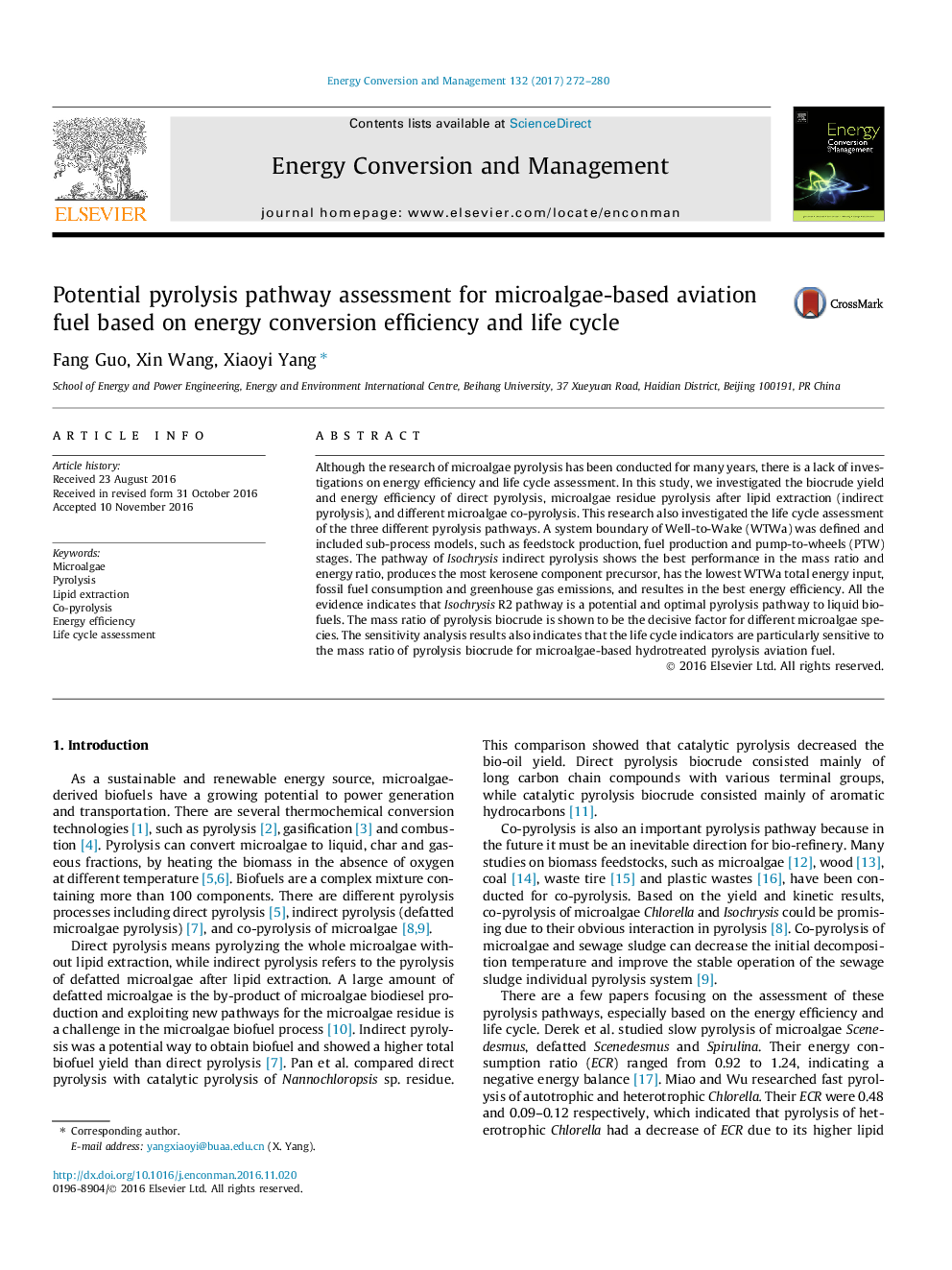| Article ID | Journal | Published Year | Pages | File Type |
|---|---|---|---|---|
| 5013105 | Energy Conversion and Management | 2017 | 9 Pages |
Abstract
Although the research of microalgae pyrolysis has been conducted for many years, there is a lack of investigations on energy efficiency and life cycle assessment. In this study, we investigated the biocrude yield and energy efficiency of direct pyrolysis, microalgae residue pyrolysis after lipid extraction (indirect pyrolysis), and different microalgae co-pyrolysis. This research also investigated the life cycle assessment of the three different pyrolysis pathways. A system boundary of Well-to-Wake (WTWa) was defined and included sub-process models, such as feedstock production, fuel production and pump-to-wheels (PTW) stages. The pathway of Isochrysis indirect pyrolysis shows the best performance in the mass ratio and energy ratio, produces the most kerosene component precursor, has the lowest WTWa total energy input, fossil fuel consumption and greenhouse gas emissions, and resultes in the best energy efficiency. All the evidence indicates that Isochrysis R2 pathway is a potential and optimal pyrolysis pathway to liquid biofuels. The mass ratio of pyrolysis biocrude is shown to be the decisive factor for different microalgae species. The sensitivity analysis results also indicates that the life cycle indicators are particularly sensitive to the mass ratio of pyrolysis biocrude for microalgae-based hydrotreated pyrolysis aviation fuel.
Related Topics
Physical Sciences and Engineering
Energy
Energy (General)
Authors
Fang Guo, Xin Wang, Xiaoyi Yang,
